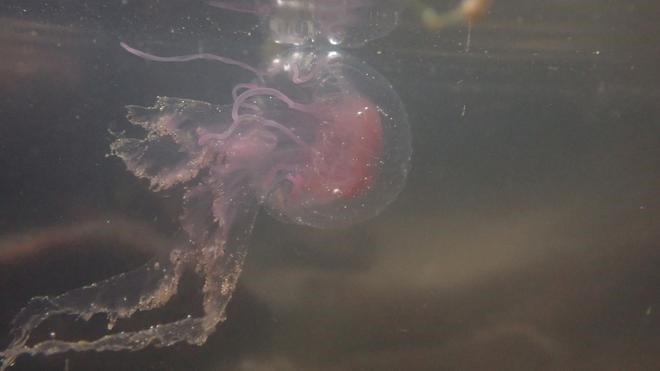
Pelagia noctiluca

05.04.2024
Pelagia noctiluca
|
For the Prelims:About Pelagia noctiluca,Key Points |
Why in the news?
In an unusual occurrence, a bloom of venomous jellyfish was reported by marine researchers across the Visakhapatnam coast recently.
Key Points :
- Rarely seen in the East coast of India, scores of the venomous jellyfish species, with three to five centimeters long diameter of bell, were spotted across RK Beach and other parts of the coast, which are frequented by tourists and visitors.
About Pelagia noctiluca:
- Pelagia noctiluca is a venomous species of jellyfish.
- It is also known as the mauve stinger or purple-striped jellyfish.
- These are bioluminescent, having an ability to produce light in the dark.
- It has a painful sting and it can cause different degrees of illnesses such as diarrhoea, vomiting and anaphylactic shock(a severe allergic reaction that can develop quickly and be life-threatening).
- Pelagia noctiluca is found worldwide in tropical and warm-temperature seas. Unlike other jellyfish species, it has stingers not just on the tentacles, but on the bell too.
- A jellyfish bloom is when the population of the species increases dramatically within a short period of time, usually due to a higher reproduction rate.
- According to marine biologists, jellyfish blooms are reported frequently as a result of rising ocean temperatures, one of the main causes of substantial population growth.
- Venomous jellyfish blooms have in the past been known to have caused massive damage to the fishing industry and impacted tourism.In the past, a bloom of Pelagia noctiluca had damaged penned salmon at a fish farm in Ireland.
Source: The Hindu